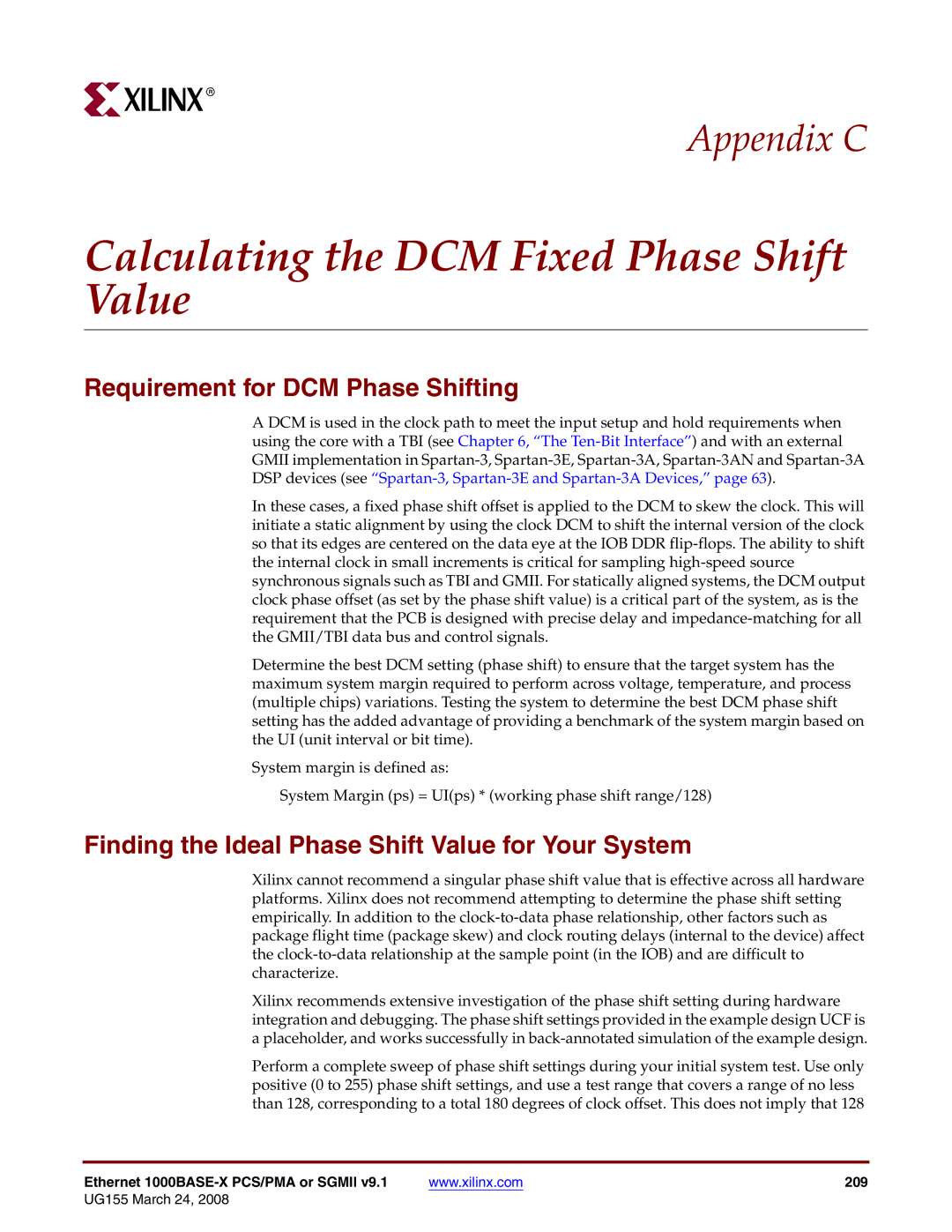
R
Appendix C
Calculating the DCM Fixed Phase Shift Value
Requirement for DCM Phase Shifting
A DCM is used in the clock path to meet the input setup and hold requirements when using the core with a TBI (see Chapter 6, “The
In these cases, a fixed phase shift offset is applied to the DCM to skew the clock. This will initiate a static alignment by using the clock DCM to shift the internal version of the clock so that its edges are centered on the data eye at the IOB DDR
Determine the best DCM setting (phase shift) to ensure that the target system has the maximum system margin required to perform across voltage, temperature, and process (multiple chips) variations. Testing the system to determine the best DCM phase shift setting has the added advantage of providing a benchmark of the system margin based on the UI (unit interval or bit time).
System margin is defined as:
System Margin (ps) = UI(ps) * (working phase shift range/128)
Finding the Ideal Phase Shift Value for Your System
Xilinx cannot recommend a singular phase shift value that is effective across all hardware platforms. Xilinx does not recommend attempting to determine the phase shift setting empirically. In addition to the
Xilinx recommends extensive investigation of the phase shift setting during hardware integration and debugging. The phase shift settings provided in the example design UCF is a placeholder, and works successfully in
Perform a complete sweep of phase shift settings during your initial system test. Use only positive (0 to 255) phase shift settings, and use a test range that covers a range of no less than 128, corresponding to a total 180 degrees of clock offset. This does not imply that 128
Ethernet | www.xilinx.com | 209 |
